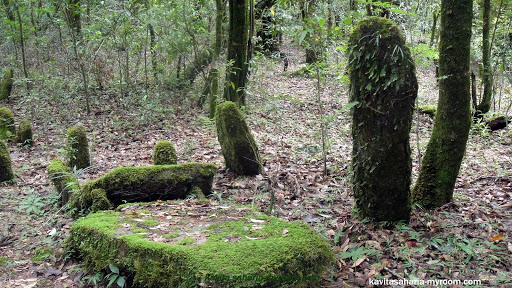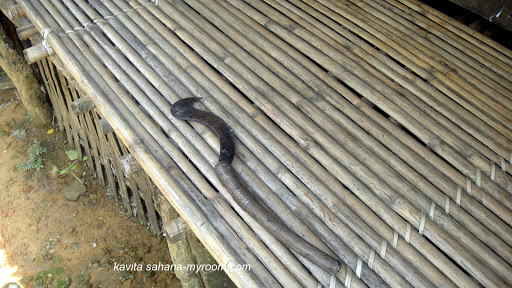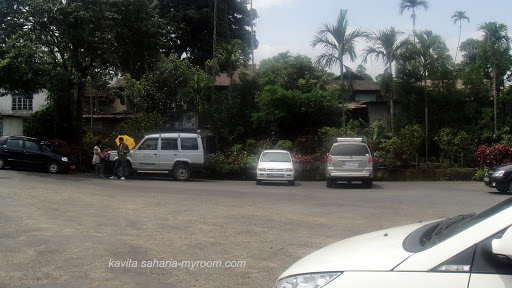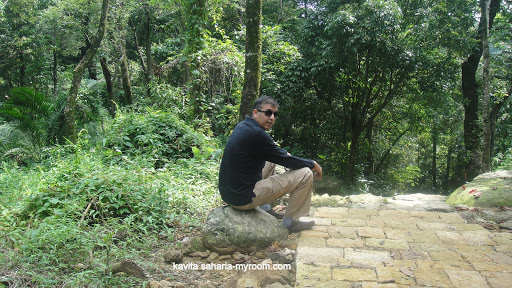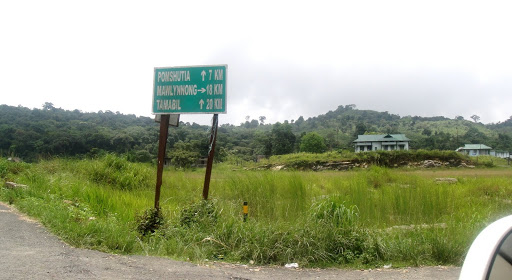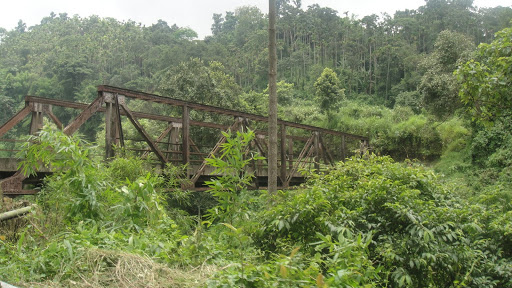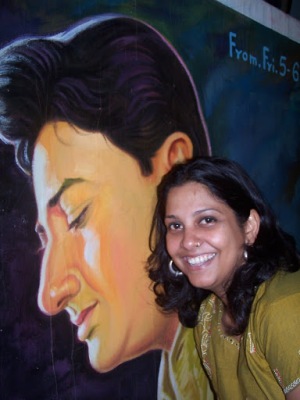It is with great pleasure that i introduce you to one of my closest and dearest friend Rupa. Ruprekha Mushahary is working with ICCW (Indian Council for Child Welfare), New Delhi, as a life member as well as the Secretary of the Council’s Assam State Branch. She passionately works for child rights and causes. Being a keen observer of the world she believes there is so much to learn and so much to do that there is no time to lose. Her hobbies include reading, writing, traveling, gardening, blogging, needlework/embroidery and of course cooking.Her interesting blog Feelings is also a treasure trove of Bodo indigenous recipes.I thank her for sharing here a true story that is most close to her heart.
 |
| pic courtesy : photohome.com |
Perking myself on the cane sofa of the balcony where I usually take my much needed morning cup of tea after the walk, I reached for the phone. I could still hear the pounding of
my heart clearly. Now I could see that the calls were from Anita, the coordinator of our SAA, Sishu Greh. A message from the coordinator of Child line, Sanjeev too was waiting, which relieved me of all my worries instantly. I knew why Anita kept calling. “A new born (girl) found in the municipal garbage dump, serious, big ants found feasting on her head, neck and legs” was what the message said. I jumped out of my sofa, one more baby, how wonderful it feels to be a mom ! I Stood up, to get started, had a long day ahead . I only prayed that God be kind and let the baby survive !
As I drove to the hospital that morning to see the baby which was by then rescued and shifted to the hospital after informing the CWC(Child Welfare Committee), I was wondering, what might have happened to the mother, what made her throw the child away to die on a cold winter night ! Was she unwed, was the child taken away from her by force, had this sad incident occurred only because it was a baby girl ? The baby was in a critical condition with some portion of the head injured severely and wounds of insect bites all over her tiny body. Passing by a garbage dump I shivered at the thought of the baby lying there the whole night. My heart cried out. I realized my vision was blurred with tears, so slowing down the car I wiped my eyes and said a prayer “My good Lord, just save this child, give her life and I promise you, she will never be without a home.”
While wondering why had the mother left the baby to die in a garbage dump, the face of Dipali came to my mind which softened my heart. The faraway look in her eyes always disturbed me, as if her eyes searched for someone in particular in the distance. She rarely smiled. I saw a faint smile the other day when I once wore a saree on one occasion and probably mistaking me for her mother she pulled the pallu of my saree calling out “maa…maa..”. Turning around I had picked her up that day in amusement, asking her to say it again. Smiling the same faint smile she repeated once again, but soon went back to her original quiet smile less self again.Dipali was not thrown away by her biological parents like many heartless ones in the garbage dump or abandoned in the hospital. Her helpless, young mother who was under aged to bear a child was betrayed by her lover and left her to fend for herself once she got pregnant. She lived for sometime with her father and step mother, but was soon thrown out on the street with a year old Dipali in her arms as soon as her father died of an accident while at work. During this time she had befriended a man who wanted to marry her but wouldn’t take Dipali in. After a lot of pleading he did finally let Dipali too be carried along when she entered her husband’s home. But soon he started torturing both Dipali and her mother. When it became unbearable she came to us with Dipali to surrender her, perhaps that was the only option left before her. There was absolutely no alternative. After a month long counseling and producing before CWC, the procedure was completed and Dipali was surrendered for ever. In just all of eighteen months, Dipali’s world came crumbling down in such a harsh manner that she probably couldn’t react to the situation. With the same faraway look in her eyes she kept staring towards the road as her mother left, never to return to see how her daughter grew or how she looked in the last two years. Dipali never got an opportunity to smile. Although in Sishu Greh she gradually learnt to smile her faint smile, her lost faraway look remained in her eyes, no matter how hard we tried to cheer her up.Parking the car out side, I ran up the four flights of stairs to the floor where I was told the baby was kept. Could barely make out anything as I looked through the glass door of the ICU, she was just a tiny bundle with a bandaged body and several pipes going in and out of her. Oh, what had the little thing done to suffer so ! The doctor assured me, he would do his best, yet probably unsure of himself, added, “…but you never know, outer injuries have been tackled well, although only the test reports will confirm of any infection or inner injury.” Two days later I was informed she was suffering from jaundice too. There was nothing we could do but pray and wait, never losing heart even for once.After almost a month finally she was allowed to leave the hospital and come home, come to the home where we bring them up with all the care and love these infants were denied by their biological parents for reasons best known to only them. Carrying her in my arms as I came out of the hospital to get into the car, she saw her first sunlight and shut her eyes hard finding it too bright. I choked in happiness, planting a kiss on her eyes I sat in the car securing her on my lap, holding her firm, and whispered in her ears, “you are safe now sweet heart …. “Everyone in Sishu Greh was over enthusiastic to welcome the newcomer in their midst and in finding her a suitable name. Supervisor, helper, ayah all flocked around the baby with their usual chirpy and loving inquisitiveness. Mira said, “Mirinda”, Latika said, “Lata”, “Ah, so you want her name to match yours, no, Mala sounds much better”, said Malati. Amused at their quest in finding a name for her as they playfully argued with each other, I sat smiling, listening to them. Finally they seemed to give up and decided I might as well come to their rescue finding her a nice name. The first name that came to my mind was Tora, as the irresistible sight of her blinking her eyes once in the bright sunlight and closing hard like a small yet bright twinkling star was still fresh in my mind, Tora was all I could think of, so, Tora she would be !I carried Tora around to introduce her to Junak, the naughty fellow who was now a year old and everyone’s pet, Lily who won us all by her pretty smile at barely seven months of age, Dibya showing off her two little teeth with pride when lifted up from her cot and Naina, at nine months had already found loving parents, home, grand parents, who came often to play with her till all papers, formalities were completed and Naina could be finally taken away to her home where she can grow well, never to be thrown away or abandoned .All this while two and a half year old Rahul,jumped around Tora cheerfully and would not leave Tora’s side even for a moment. I could see that a bond had already been established, a bond that was out of any human power to decipher. He pulled me towards the cot which was waiting for Tora, ready with fresh new sheet, small side pillows and blanket in pastel hue. Oh how I love this sweet fresh smell of the baby room ! He gestured me to put Tora in the cot with his tiny pink fingers. Doing exactly the way he had directed me, like an obedient student, I lifted him up now in my arms after laying Tora gently down on the cot, kissing his pink fingers.
My mind raced back to that particular day looking at Rahul’s full round face with chubby pink cheeks, eyes now smiling his brightest inquisitive smile, all exited at the arrival of a new baby. How could I forget that day when our Childline team had rescued a new born baby boy from the railway tracks and had brought later to Sishu Greh, whom we fondly named Rahul. It was a humid summer afternoon, although it had been raining for the last two consecutive days. Most of the roads in the city were over flowing with flash floods, electricity was almost non existent and poor telephone net works played havoc with our lives. That was the day when following a phone call, our Childline team with the help of Police personnel had set out to rescue the baby, lying on the railway track for God knows how long. Walking several kilometers in that heavy downpour wading through water, the team rescued Rahul. During his treatment in the hospital and the following months of care at Sishu Greh were like ages, but slowly yet certainly, Rahul did recover, to be fit enough today to welcome yet another beautiful ‘God’s gift’ who was unwanted/abandoned by the person who brought her to this world, to our home of love, care and life, Sishu Greh.While many Rahuls, Junaks, Nainas and Toras happily grow up in Sishu Greh, under the loving care of a trained team of doctors, nurses, supervisors, helpers and ayahs, another team gets down to some hectic job of planning their future in a new home with adoptive parents. Sishu Greh is a Special Adoption Agency(SAA), as per provisions of the JJ Act, licensed by CARA(Central Adoption Resource Authority), for in-country adoption, under the Ministry of Women & Child Development, Government of India.Through a systematic procedure and guidelines notified by the Government of India, we move forward with our aim of turning these orphaned, abandoned, surrendered children into the legitimate children of their adoptive parents with all the rights, privileges and responsibilities that are attached to a relationship.We go through endless number of PAP(Prospective Adoptive Parents), give per-adoption counseling to couples, followed by registration, submission of documents, our team’s home visit and finally selection of PAP. Then the selected couple is invited to Sishu Greh to mingle with the children and pick the child of their choice. The rest of the procedure then follows, medical test of the child again if the PAP so desire, per-adoption foster care after signing of deed between PAP and SAA, filing of petition in the court of the Session’s Judge within ten days of pre-adoption foster care and appearance before court on evidence date. The formalities are complete once the honorable Judge gives his order for legal adoption. Our job doesn’t end here, even after two years of follow up when we practically have nothing left to do with a child, as he/she gradually settles down in the new home, with his/her adoptive parents and the family as such, the bond that binds us together doesn’t get snapped so easily.Our Tora soon grew up to be a sweet little darling, winning everyone’s heart with her twinkling eyes, the habit of shutting her eyes hard, pressing both the eye lids remained with her, making her smile irresistibly beautiful now. How time flew, soon Tora was a year old, and as per procedure left us for her new home with her adoptive parents. I couldn’t witness the moment of her departure from Sishu Greh, couldn’t put her on the lap of her adoptive mother with these very hands which so lovingly, carefully brought her from the hospital a year ago, these very eyes which were fixed tirelessly on the bandaged bundle that lay in the tiny cot of the ICU of the hospital from outside the heavy glass doors. Why, why did I feel the way I did ? Wasn’t it what I wanted, wasn’t it why our whole dedicated team worked so hard ? Didn’t we want a home, parents and family for every Tora, every Rahul ? Then why did I cry every time when each of them left ? This was one of those days I would quietly sneak out, shut the door of my room and weep like a child in sorrow of losing, yet, blissfully happy and contented in finding a home for a child, till exhausted I fell asleep. “God, do keep the twinkling smile on her face always.”Dipali’s look still says she waits for someone, yet forces a smile when someone appreciates her drawings, which she paints mostly with black or pale shades. Tora visits us with her parents on occasions like Bihu or Durga Puja bringing lots of gifts for new babies in the Sishu Greh. She is looking prettier with each passing year, and God, couldn’t believe my eyes, she looked so much like her adoptive mother ! Rahul cannot visit too often as his father is posted to another district now, although he mails me the pictures he draws in the computer. Last time Naina visited us, she insisted that we attend her birthday party and we did. Her happiness knew no bounds seeing us at her home. “Junak came first in his class this year, after all he is my son”, declared his proud father. This is bliss, ultimate bliss, I told myself.The journey continues …. bless those parents who give a home, a family and lots of love to these Toras, Rahuls, Dibyas and Nainas…….
- Thank you all for your kind words of appreciation. While writing this piece, I was wondering where to start and where to end, as during my association with this organization over a decade now,I have come across so many children each having a different tale to tell. Every day some where some one is abandoned or orphaned. On the other hand, there are so many parents who want to adopt a child but actually do not know how to go about it the right way which is adopting legally. Govt of India is giving utmost importance in this field to curb child trafficking and abuse. Our effort and main concern is to hand over the baby to the right parents, the right way.
 |
||||||||
| A View Of Mighty Bhramaputra From Babaji Parbat Gondmow Assam Tourism Cottages Sualkuchi |
 |
| Saraighat Bridge Guwahati : A View From Gondhmow Cottages Sualkutch |
 |
| Sacred Grove Mawphlang |
After ten minutes walk we reached near the entrance of the grove which would have been difficult to guess or locate without John’s guidance.
As we entered the grove it felt like stepping into another world .Words fail to express that feeling ,it was magical. The tall trees cover the area like an umbrella .There was a considerable difference in light ,it was dimmer. The forest really looked untouched .It strongly reminded me of the Florida Disney world Dinosaur ride.There was one strange thing though ,we heard no bird chirping .
.The green Foliage of the Sacred Grove changes from deep green to light green, depending on the seasons and availability of rainfall.John told us the best time to come here is spring when the forest is covered with blooms.
We saw many beautiful orchids there .
Nobody collects anything from the forest, not even fallen branches of trees .The humus-covered grounds likewise harbour myriad varieties of plant life, many of which are found nowhere else.
Part 2:Living Root Bridge Of Riwai
Part 3 :Sky View Mawlynnong
Mawlynnong of Meghalaya has won the acclaim of being the cleanest village of Asia in 2003 by Discover India Magazine and also the cleanest village of India in 2005.Cleanliness is almost like an inborn trait of the residents of this more than hundred years old village .All its residents can read and write .As you can see in picture – bamboo dustbins called Thapa in local language are placed in every nook and corner of the village.Every single piece of litter and fallen leaves /flowers are collected here which later are shifted to a pit to be used as manure by the villagers.The village has a very strong and strict council.Smoking is completely banned here.
The cute looking bell at local school.
The local church which is under some repair work at present .
We entered into the church campus and looked around.
Beautiful little cottages – some had installed modern amenities like dish tv antenna .
 We tried our best but failed to find any litter anywhere.The place was impeccably clean.My blogger friend Irfan had been to Mawlynnong few weeks back .I thank him for sharing with us his views on that trip here .This is what Irfan expressed -“Honestly speaking before reaching Shillong I didn’t had any idea about Mawlynnong. All I knew in Meghalaya was Cherrapunji as the wettest place of world and some near by tourists places. It was only after reaching Shillong that I came to know about Mawlynnong, “the cleanest village of India”. And the adjective “cleanest village” made me curious to know little more about the place.Because when we think of village, there comes an image of being muddy, dusty and unkempt struck by poor hygiene. Therefore something like cleanest village, that too in such a remote area of India was simply unimaginable to imagine.
We tried our best but failed to find any litter anywhere.The place was impeccably clean.My blogger friend Irfan had been to Mawlynnong few weeks back .I thank him for sharing with us his views on that trip here .This is what Irfan expressed -“Honestly speaking before reaching Shillong I didn’t had any idea about Mawlynnong. All I knew in Meghalaya was Cherrapunji as the wettest place of world and some near by tourists places. It was only after reaching Shillong that I came to know about Mawlynnong, “the cleanest village of India”. And the adjective “cleanest village” made me curious to know little more about the place.Because when we think of village, there comes an image of being muddy, dusty and unkempt struck by poor hygiene. Therefore something like cleanest village, that too in such a remote area of India was simply unimaginable to imagine.
lWe also saw many pineapple plants .The area smelt of pineapple and jack fruit.
I loved this cutting tool which was unusual in shape hence took the picture.
He took us inside his kitchen and showed this barrel like bamboo made thing that they use to dry their washed clothes when there is no Sun in rainy days.
A tea addict that i am i was delighted to see this board.
Because they were hungry Chandan ordered lunch for three of them .It was Monday ,my fast day so i just ordered some tea.The cook asked us to wait for twenty minutes as everything was freshly prepared there.
To which he replies -“Literally, ‘sweet journey’. Yatra means journey, often to a religious pilgrimage site. Journeys have paths and, if my past paths indicate future ones, then the circular, overlapping shapes of the Indian sweet jalebi is a good representation of my likely path on this journey. I also love to eat jalebi and expect to have many along the way”.After exchanging contact details we said bye to each other and shook hands twice one as farewell and another for our common love towards North East .Right now he is in Thailand , got a mail from him this morning where he told me to feel free to use his pictures on my blog .Thanks Brian.
The lunch was ready – it had chicken curry ,a mixed vegetable preparation , a tomato based chutney with lots of fresh coriander and some rice and dal .The food was simple but cooked and served very neatly.We paid a total sum of Rs 270 for the tea and lunch.Very reasonable.Now we wanted to see Machaan the tree house we had heard so much about .
 This lovely lady from a nearby house smilingly offered her help by sending her cute little daughter to guide us to the Machan.
This lovely lady from a nearby house smilingly offered her help by sending her cute little daughter to guide us to the Machan.Balancing Rock (Maw Ryngkew Sharatia) was an ancient Khasi shrine that pre-dated the advent of Christianity in Meghalaya.
 |
||
| A Welcome Message At Parking Place : Mawlynnong
Contd from Part 1: Shillong To Mawlynnong It was almost two in the afternoon as we reached Mawlynnong .The first thing that catches your eyes is beautiful flowers and well maintained colorful plants everywhere.It is almost like stepping into a gorgeous botanical garden or a beautiful place from fairy tales.Mawlynnong is also called God’s Own Garden.
|
 |
| Parking Place For Visitors
We were the first ones to visit the place that day .It was clean and empty .We parked our car and looked around .
|
 |
| This is Sumer a resident of the village busy cleaning the fallen leaves.
We saw this young boy collecting fallen leaves from the area .As he got up we greeted each other .His name was Sumer.
|
 |
| A Dent /Cavity On The Rock :Mawlynnong |
 |
| Sky View : a bamboo and cane structure that offer a bird’s view to the village and Indo Bangla Border |
 |
|||||||||||||||||||||||
| Ticket Stall |
Bamboo canes are tied together with the help of cane ropes to make a sky pathway.Not even a single iron nail is used her .Very eco- friendly.
 |
| me and Dulal |
 |
| Thatched cottages in Riwai Village |
 |
| ticket stand |
This is the place where we bought entrance tickets .A village teen issued us the ticket .The fee was 10 Rs /head .The spot is managed by village authorities and thankfully there is no govt interference here.
 |
| stone pathway |
We followed a stone pathway .These kind of path are known as King’s Way . Khasi villages are inter connected through these.At some places we saw the old stone path was replaced by new stones. We met some visitors who after seeing the steps gave away the idea of going to the bridge . How sad ,they had no idea what they missed .
 |
| living root bridge Riwai : view as you approach |
 |
| Thanks to Pranab for this picture : stone path on the bridge |
 |
| a view from the back |
The roots are naturally self-renewing and self-strengthening as the component roots grow thicker.As a rule if any villager notices a new root they carefully arrange it accordingly.
 |
| stone and root path over the bridge : thanks to Pranab |
There are many such bridges in the state .One of the most amazing and hugest is in Umshiang’s Double Decker Root Bridge.
 |
| A top view : image courtesy Pranab |
Look at the roots : nature’s brilliant art work.Even after so many days i still have a dekho at my album at least twice.
This is how the bridge looks from the front .A better view could have been captured from the river down .But we skipped it as we had already spent a lot of time there.
Some parts of the bridge looked like beautifully designed picture frame – each one of us took the opportunity to pose .
As i mentioned earlier village rules prevail here ….. read the warning .
How we wished that we had more time in hand .We moved back to where we had parked our car .The way back was little tiring as we had to climb many steps .Took some rest in between.
We had some company too.
Now we moved towards Mawlynnong : a km or two and we reached there ….
To Be Contd
 |
| Upper Shillong |
 |
| Beautiful paddy fields in outskirts of Shillong |
 |
| Meghalaya has many rivers. Most of these are rain fed and are therefore seasonal |
We started our journey at 8.30 am .Being the most wettest place on earth Meghalaya is known for its unpredictable weather .Raincoats or umbrellas are must.We carried along drinking water ,some fresh local fruits and a good stock of snacks like biscuits ,sweets ,dry nuts and chocolates .The scenic drive from Shillong to Mawlynnong offers a spectacular view of changing landscapes .
 |
| The road diversion : right goes to Cherapunji and the left to Mawlynnong |
Starting early was a good move as we had enough time in our hands to stop at every beautiful view. The cloud covered mountains below prove that it indeed is The Abode Of Clouds , the literal meaning of the word Meghalaya .
 |
| cloud covered mountains |
We were lucky to have a clear view of beautiful surroundings as in monsoons most of the times it is obscured by thick clouds.
 |
| Beautiful waterfall cascading down hill slop |
 |
| A small but beautiful church |
 |
| Rock textured hill |
As i mentioned earlier the landscape abruptly kept on changing ,it was like nature’s own slide show .
 |
| The Church At Wahlyngkhat |
I had to share picture of this beautiful isolated church . We stopped here and spent good twenty minutes ,exploring the area around . I have a tip for those who love photography ( not on photography skills) ,please bring extra batteries as one is not enough.
The weather was getting warmer. We were about to reach Pynursula .
We halted here to buy more bottled water .It is a very small town and half way point of the journey.Those who travel by private taxi services get a fifteen to twenty minute tea break here.
 |
| Road to Pontung Villge |
 |
| the one way distance between Shillong and Mawlynnong as per our car meter |
 |
| had tried to capture the arrival of Bordoisila March 2009 from our terrace |
i was too scared to ask any question.Soon the weather calmed down and we reached home safely. Later that night mom narrated us the legend of Bordoisila. All this time i was waiting for the right pictures to write this post .I am posting it today even if the pictures are not right , will update the post later once i have them .
Bordoisila is a wild ,fierce wind which announces the arrival of spring season in Assam.It occurs in the month of March -April ,just before Rongali/Bohag Bihu one of the most famous festival of Assam.The wind carries dust,dry leaves,twigs and plastic wastes in case of cities/towns and anything that comes on its way.It is soon accompanied by huge mass of dark clouds and heavy rainfall .It softens the dry fields .Many times it leaves behind a trail of destruction.
As a traditional belief in Assam people offer her a special comb to comb her hair and a wooden stool to sit her on.The comb is made of Bamboo and is called Kakoiphoni ,it was used for combing hair in ancient times by Assamese people .The stool is called Borpira .Some keep in their courtyard a bamboo strainer which is used for clearing dirt from the grains specially rice .It is called Salooni ( as the word Chalni in Hindi).Many throw rice in their courtyard ( sutaal) to calm her down.
Updated : Thanks to Rupam Sarma for providing me the picture below
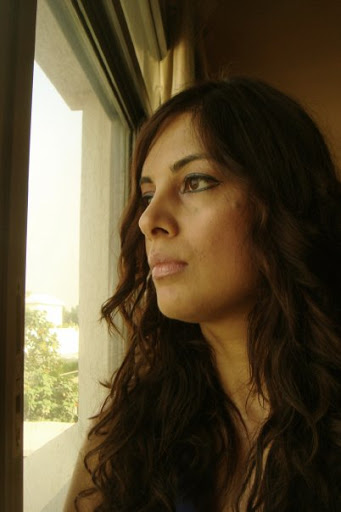 |
| Sharmin |
photo feature and recipes related to Bora Saul , an integral part of Assamese Cuisine. Thank you Sharmin .
BORA SAUL
 |
| johabora saul |
 |
| kola bora pitha |
 |
| bora saul with jaggery and cream |
separately,
 |
| til pitha |
until soft .
grind the
cloth and
crush them
the grated
(tawa)
and
to form a
UPDATE :Because many readers wanted to know if Bora Saul is similar to Thailand Sticky Rice ,Sharmin sent me this picture where the similarity is quite evident .I am adding same picture to the post .
Bless you, my darling, and remember you are always in the heart – oh tucked so close there is no chance of escape – of your sister. ~Katherine Mansfield
 |
| A sculpture from Goa with real gold paint . |
thoughts.As I am always fascinated by her and her work ,I called her up later requesting her to think about it seriously .She took the call and now for the last ten days both of us are working together online on this.Initially i got myself involved just to support her but as the time passed the beauty of it got me totally interested in her work .Now i am totally hooked . The documentation will take months to complete.In this post i am sharing with you few things about Mamta and glimpses of her work as an art conservator.
 |
| paintings by Raja Ravi Verma:before and after restoration |
Above : This broken glass painting is owned by Nafisa Ali .It was restored successfully .This kind of work needs lots of patience and hard work.
Before Restoration:Thanka Painting
After Restoration






























